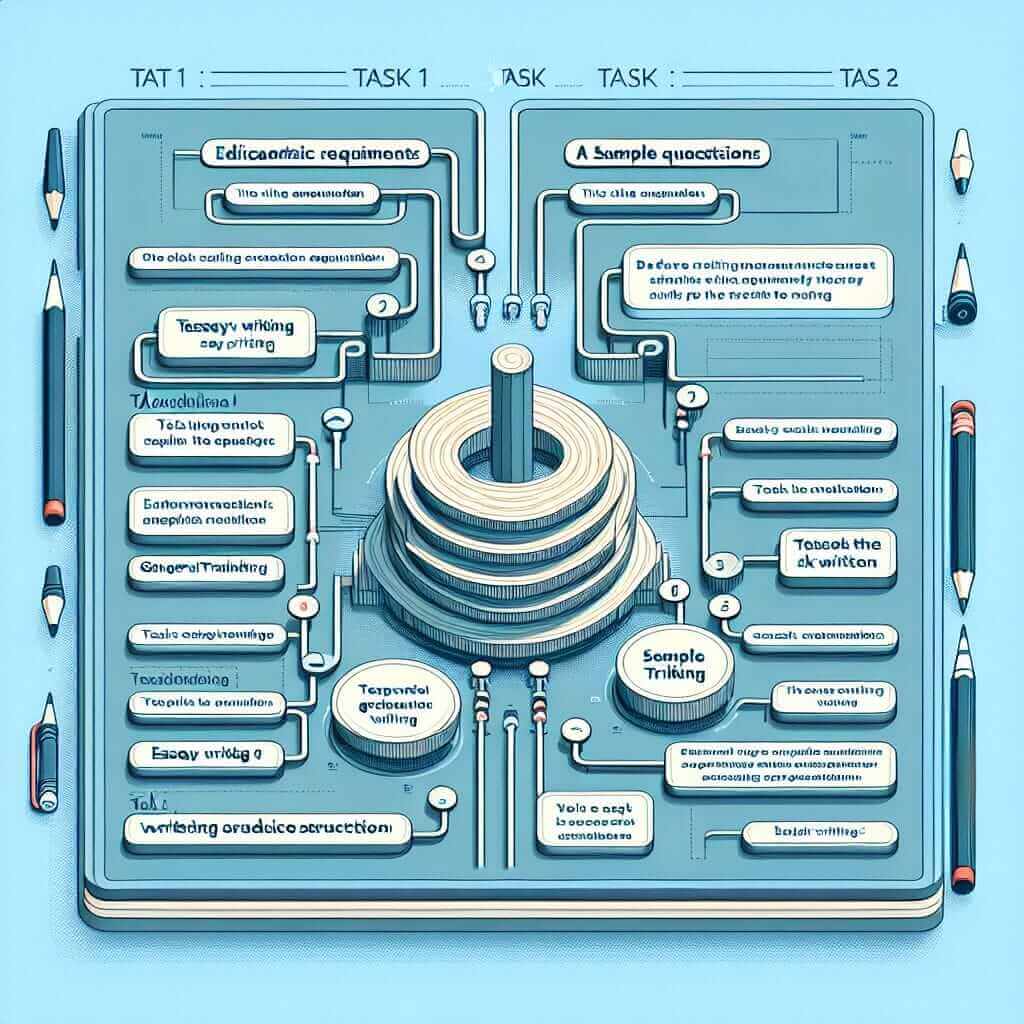In the IELTS exam, the Writing section plays a crucial role in assessing your ability to convey ideas and arguments in a coherent and well-structured manner. Understanding the structure of the IELTS Writing test is essential for achieving a high score. In this article, we will explore the detailed structure of the IELTS Writing test, provide examples from real IELTS exams, and offer practical tips for preparation.
Understanding the IELTS Writing Test Structure
The IELTS Writing test is divided into two tasks, each with specific requirements that test different writing skills.
Task 1: Academic and General Training Differences
Academic Writing Task 1:
In the Academic module, Task 1 requires you to describe, summarize, or explain visual data. This could be a bar chart, line graph, pie chart, table, or process diagram.
- Example: You might be asked to describe the main trends in a bar chart showing the population of different cities over a decade.
General Training Writing Task 1:
In the General Training module, Task 1 involves writing a letter. The letter may be formal, semi-formal, or informal, depending on the context.
- Example: Write a letter to a friend narrating a recent trip you took together.
Task 2: Essay Writing
Task 2 is the same for both Academic and General Training modules. You are required to write an essay in response to a point of view, argument, or problem. This task tests your ability to present a well-reasoned argument and support your ideas with evidence.
- Example: Some people believe that technology has made our lives easier while others think it has made them more difficult. Discuss both views and give your own opinion.
Detailed Breakdown of Each Task
Task 1: Academic
Structure:
- Introduction: Paraphrase the question.
- Overview: Summarize the main trends or key features.
- Body Paragraph(s): Provide detailed comparisons, contrasts, and data where relevant.
Example:
- Introduction: “The bar chart illustrates the population sizes of various cities from 2000 to 2010.”
- Overview: “Overall, City A and City B saw significant population growth, while City C experienced a decline.”
- Body: “In 2000, City A had a population of 1 million, which increased to 2 million by 2010. City B’s population grew from 1.5 million to 3 million over the same period.”
Task 1: General Training
Structure:
- Introduction: State the purpose of the letter.
- Body Paragraphs: Include all requisite details or requests.
- Closing: Summarize the letter purpose and indicate further action or response needed.
Example:
- Introduction: “Dear John, I hope you’re well. I’m writing to thank you for your hospitality during my visit.”
- Body: “I greatly enjoyed the museum trip. It was fascinating to learn about the city’s history. Also, the dinner at the new restaurant was unforgettable.”
- Closing: “Once again, thank you for hosting me. I hope to see you soon. Best regards, Jane.”
Task 2: Essay Writing
Structure:
- Introduction: Paraphrase the question and present your thesis statement.
- Body Paragraphs: Typically two to three paragraphs presenting arguments, supporting evidence, and examples.
- Conclusion: Summarize main points and restate your opinion.
Example:
- Introduction: “In recent years, technology has become an integral part of our daily lives. While some argue that it simplifies life, others believe it creates more complexities. This essay will discuss both perspectives.”
- Body Paragraph 1: “On one hand, technology simplifies tasks. For instance, online banking allows people to perform transactions from home, saving time and effort.”
- Body Paragraph 2: “On the other hand, technology can lead to issues such as information overload. Many people find it difficult to keep up with constant updates and notifications.”
- Conclusion: “In conclusion, despite some complexities, technology generally makes life easier by streamlining various processes.”

Common Mistakes and How to Avoid Them
Mistakes in Task 1:
- Not providing an overview: Always include an overview in Task 1.
- Misinterpreting the data: Ensure accurate interpretation of the given data.
Mistakes in Task 2:
- Not addressing all parts of the question: Make sure to discuss all parts of the prompt.
- Poorly structured essays: Follow a clear structure with cohesive paragraphs.
Practice Tips for Success
- Understand the requirements: Familiarize yourself with the structure and requirements of each task.
- Practice regularly: Use past papers and model answers to practice.
- Seek feedback: Have your essays reviewed by teachers or peers to identify areas for improvement.
- Work on timing: Practice writing under timed conditions to get used to the pace required in the exam.
Conclusion
Understanding the structure of the IELTS Writing test is fundamental to achieving a high score. Whether you are taking the Academic or General Training module, being well-prepared and practicing regularly will help you effectively convey your ideas and arguments. Good luck!
Feel free to leave comments, share your thoughts, or explore more content on our website for comprehensive guides and tips.